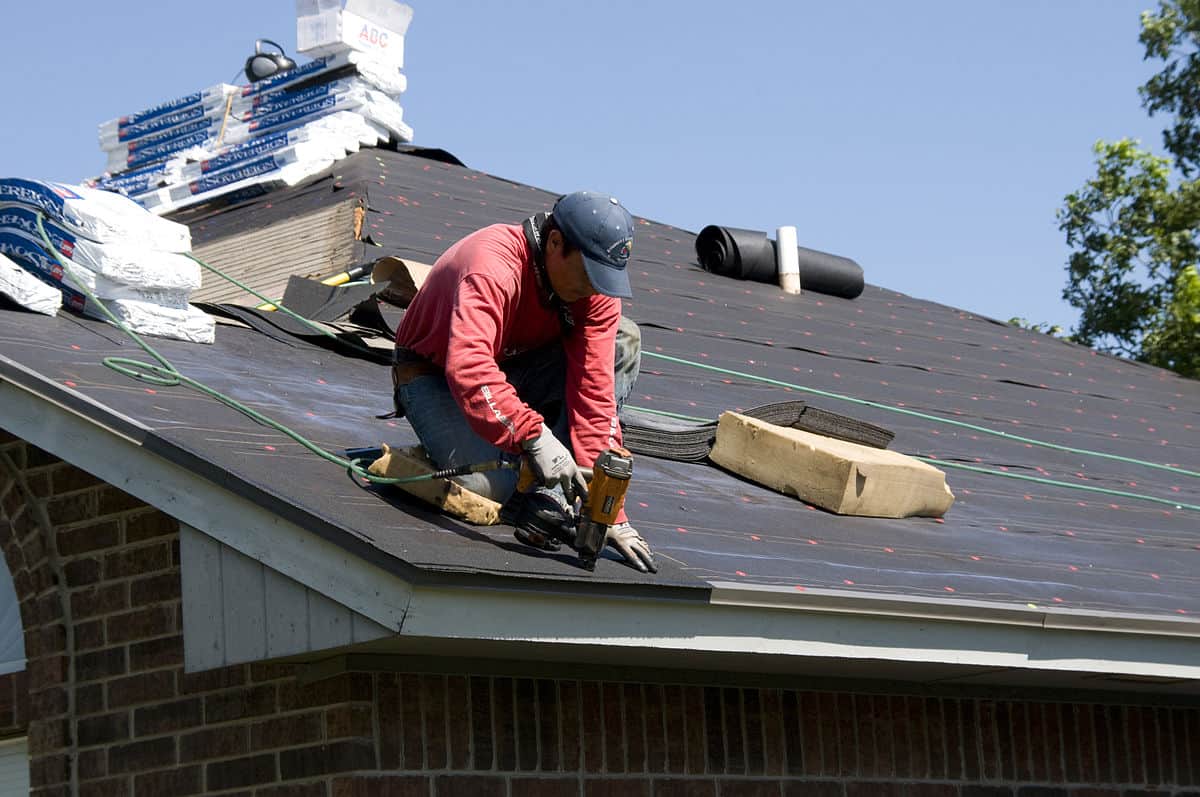Examining the Providers Supplied by Roofing Companies in Gainesville Florida
Examining the Providers Supplied by Roofing Companies in Gainesville Florida
Blog Article
Ideal Practices for Ensuring Proper Roofing Air Flow
Guaranteeing appropriate roofing air flow is vital for the longevity and performance of a roof. A well balanced consumption and exhaust air vent ratio, typically 1:300, plays an essential duty, with intake vents ideally positioned at the lower edge of the roof covering for trendy air entrance and exhaust vents at the peak for cozy air leave. Routine examinations to determine obstructions and maintain clear air flow are extremely important. Moreover, keeping insulation far from vents is crucial to avoid air flow constraint. Recognizing these foundational aspects sets the stage for even more thorough insights right into installment and upkeep techniques that can considerably improve your roof's performance.
Understand Ventilation Fundamentals
Properly comprehending ventilation basics is crucial for guaranteeing the long life and efficiency of roof covering systems. Effective ventilation alleviates wetness build-up and temperature level extremes in the attic, both of which can cause considerable structural damages over time. A well-ventilated roofing aids in preventing typical issues such as mold and mildew growth, wood rot, and ice dams, which can endanger the honesty of the roofing materials and the underlying frameworks.
The main objective of ventilation is to assist in the movement of air, permitting a consistent exchange in between the outdoor and interior environments. This balance is accomplished through a combination of consumption and exhaust vents that interact to preserve ideal air flow. Intake vents, normally situated along the soffits or eaves, allow fresh air to get in the attic room space, while exhaust vents, typically located at or near the roof ridge, make it possible for hot, moist air to escape.
Key elements influencing the performance of roofing ventilation include correct positioning, adequate sizing, and guaranteeing that both intake and exhaust vents are unobstructed. Routine inspection and upkeep are essential to recognize possible blockages, damage, or inadequacies in the air flow system, consequently guarding the roof's performance and longevity.
Types of Roofing System Vents
Roof covering vents play an essential function in keeping effective attic room ventilation and, by extension, the total health and wellness of the roof covering system. Numerous sorts of roofing system vents are readily available, each with distinct benefits customized to details roof demands. Ridge vents, for instance, are mounted along the roof covering's peak, enabling warm, damp air to run away from the attic. They offer constant air flow and blend seamlessly with the roofline, making them both effective and aesthetically pleasing.

Soffit vents are installed under the eaves and job in tandem with roofing vents to ensure a balanced consumption and exhaust system. By permitting cooler air to enter from below, soffit vents assist in the expulsion of hot air via upper vents. Gable vents, located on the outside walls of the attic, offer one more effective remedy, particularly in homes with saddleback roofs.
Analyze Your Present Ventilation

Next, think about the age and problem of your roofing products and ventilation elements. Older systems might not follow existing building ordinance or may have degraded over time, reducing their efficiency. Conduct an extensive examination to determine any signs of wear and tear, such as rust, damages, or gaps that could jeopardize the system's performance.
Additionally, measure the attic temperature and humidity degrees. High temperature levels and humidity can suggest insufficient air flow.
Installment Best Practices
Efficient setup of roof covering air flow systems is extremely important for making certain ideal performance and durability. Proper installment starts with recognizing the details ventilation requirements of the roof and the structure it covers. This entails calculating the correct proportion of intake to tire vents, typically adhering to the 1:300 guideline, which stipulates one square foot of ventilation for each 300 navigate to this site square feet of attic room flooring space.

Consumption vents ought to be installed at the roofing system's reduced side, usually in the soffits, to allow great air to go into. Exhaust vents, on the various other hand, must be installed near or at the roof covering's optimal to facilitate the departure of warm, wet air.
Seal all air vent links meticulously to stop air leaks and potential water seepage. Usage top quality products and follow supplier standards to make sure sturdiness and performance. Additionally, incorporating ridge vents with baffles can dramatically improve air flow effectiveness by protecting against wind-driven rainfall and snow from going into the attic room.
Inevitably, specific setup of roof air flow systems reduces prospective issues such as mold and mildew development, ice dams, and structural damage, making certain the roof's stability and the building's total health and wellness.
Regular Maintenance Tips
Uniformity in maintenance methods is basic to making certain the lasting effectiveness of roof covering air flow systems. Regular examinations are vital, preferably done biannually-- in the spring and fall. Throughout these examinations, ensure that vents are without debris, nests, and other blockages that might hinder air movement. Look for any indications of wetness buildup or mold, as these can indicate improper air flow or leakages (roofing companies gainesville florida).
Cleaning up the vents is another essential task. Make use of a soft brush or a vacuum to eliminate dust and particles from intake and exhaust vents. Beware not to harm the air vent displays or louvers during the process. In addition, inspect the attic room room for any type of signs of water damage, which could endanger the stability of the roof.
Correct insulation is similarly important. Guarantee that attic room insulation does not obstruct the vents, as this can drastically limit air flow. If any type of insulation has actually changed or worked out, rearrange or change it to preserve an effective barrier.
Last but not least, replace any damaged or missing out on elements promptly. Damaged vents, cracked tiles, or shabby blinking can all add to insufficient air flow and ought to be attended to right away. Normal maintenance makes certain that the roof air flow system works ideally, therefore prolonging the life-span of the roof covering itself.
Verdict
Making certain appropriate roofing ventilation is critical for maintaining the performance and longevity of a roof covering system. Adherence to the 1:300 consumption and exhaust air vent proportion, coupled with the tactical positioning of vents, is essential.
A visit this web-site well balanced intake and exhaust vent proportion, typically 1:300, plays a crucial duty, with consumption vents ideally Read Full Report placed at the reduced side of the roofing system for cool air access and exhaust vents at the top for cozy air leave. Consumption vents, normally situated along the soffits or eaves, enable fresh air to get in the attic space, while exhaust vents, typically located at or near the roof ridge, make it possible for warm, moist air to run away.
Soffit vents are installed under the eaves and work in tandem with roof covering vents to make certain a balanced intake and exhaust system. By permitting cooler air to get in from below, soffit vents promote the expulsion of hot air with upper vents. Adherence to the 1:300 intake and exhaust vent proportion, combined with the strategic placement of vents, is vital.
Report this page